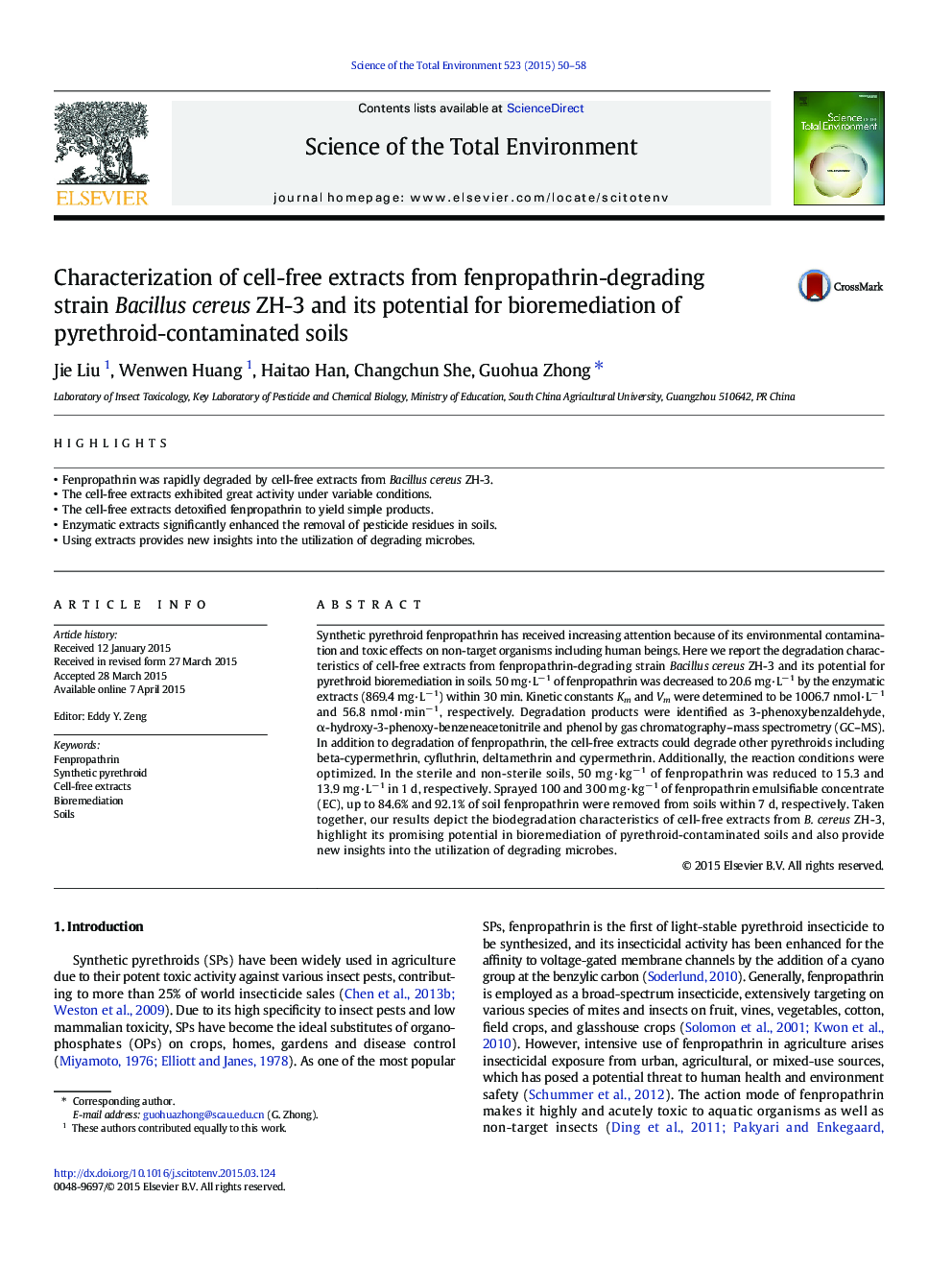| Article ID | Journal | Published Year | Pages | File Type |
|---|---|---|---|---|
| 4428391 | Science of The Total Environment | 2015 | 9 Pages |
•Fenpropathrin was rapidly degraded by cell-free extracts from Bacillus cereus ZH-3.•The cell-free extracts exhibited great activity under variable conditions.•The cell-free extracts detoxified fenpropathrin to yield simple products.•Enzymatic extracts significantly enhanced the removal of pesticide residues in soils.•Using extracts provides new insights into the utilization of degrading microbes.
Synthetic pyrethroid fenpropathrin has received increasing attention because of its environmental contamination and toxic effects on non-target organisms including human beings. Here we report the degradation characteristics of cell-free extracts from fenpropathrin-degrading strain Bacillus cereus ZH-3 and its potential for pyrethroid bioremediation in soils. 50 mg·L− 1 of fenpropathrin was decreased to 20.6 mg·L− 1 by the enzymatic extracts (869.4 mg·L− 1) within 30 min. Kinetic constants Km and Vm were determined to be 1006.7 nmol·L− 1 and 56.8 nmol·min− 1, respectively. Degradation products were identified as 3-phenoxybenzaldehyde, α-hydroxy-3-phenoxy-benzeneacetonitrile and phenol by gas chromatography–mass spectrometry (GC–MS). In addition to degradation of fenpropathrin, the cell-free extracts could degrade other pyrethroids including beta-cypermethrin, cyfluthrin, deltamethrin and cypermethrin. Additionally, the reaction conditions were optimized. In the sterile and non-sterile soils, 50 mg·kg− 1 of fenpropathrin was reduced to 15.3 and 13.9 mg·L− 1 in 1 d, respectively. Sprayed 100 and 300 mg·kg− 1 of fenpropathrin emulsifiable concentrate (EC), up to 84.6% and 92.1% of soil fenpropathrin were removed from soils within 7 d, respectively. Taken together, our results depict the biodegradation characteristics of cell-free extracts from B. cereus ZH-3, highlight its promising potential in bioremediation of pyrethroid-contaminated soils and also provide new insights into the utilization of degrading microbes.
